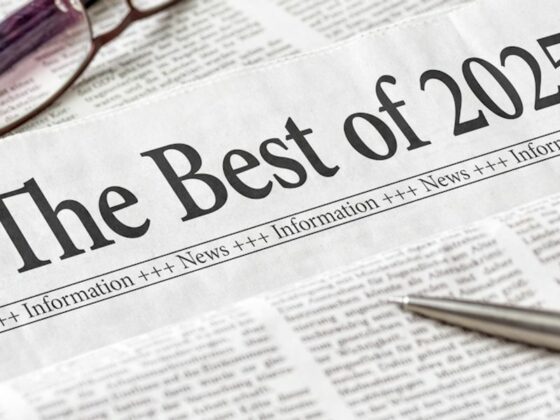
Introduction
How hotels handle payment processing is undergoing a significant transformation. Integrated payment solutions are gradually overshadowing traditional standalone payment systems. Shiji Insights sat down with James Montague, Senior Director of Shiji Payment Solutions and asked about the intricacies of hotel payment processing, exploring the hidden costs of standalone systems and the cost-reduction benefits of integrated services.
Before we proceed to our interview with James, let’s take a moment to review some critical aspects of Payment Processing.
Summary of Interview
Our interview with James highlights the key differences and advantages of integrated versus standalone hotel payment systems. He emphasises the importance of evaluating each system’s features, payment options, and labour cost savings.
Integrated systems are recommended for their security benefits, including tokenised data handling and reduced fraud risk, leading to a smaller PCI-DSS scope. These systems not only save labour costs but also boost guest satisfaction and security.
James advises hoteliers to assess their overall operations, identify existing challenges, and choose a suitable payment system partner. He points out that although savings vary, hotels with numerous transactions can achieve significant cost savings and noticeable improvements in service quality.
One of the significant overlooked costs of standalone systems is labour. The time spent on double entries, error corrections, and transaction reconciliation can accumulate into substantial hours of work. This affects not only the efficiency of operations but also adds to the operational costs of the hotel.
Advantages of Integrated Payment Solutions
Integrated payment systems in Food & Beverage services enhance guest experiences and operational efficiency. Features like pay-at-table options expedite bill payments, improving customer satisfaction and increasing table turnover rates while automated reconciliation streamlines financial processes.
A cost comparison table for a hotel with F&B services using standalone versus integrated systems would reveal substantial savings in the long run with an integrated approach, primarily due to reduced labour costs and increased operational efficiency. (See tables below)
These examples highlight how the cost-effectiveness of integrated payment systems increases with the scale of a hotel’s operations, especially when F&B Services are involved.
Scenario One: Small hotel with no Food & Beverage services
| Criteria | Standalone | Integrated system |
| Number of Payment Terminals | 1 | 1 |
| Average Transactions per Day | 20-30 | 20-30 |
| Manual Reconciliation Time (Hours/Week) |
3-4 | 1-2 |
| Software & Hardware Costs | Lower upfront cost | Higher upfront cost, lower long-term costs |
| Integration with PMS | No | Yes |
Scenario Two: Medium hotel with multiple terminals
| Criteria | Standalone | Integrated system |
| Number of payment terminals | 2-3 | 2-3 |
| Average transactions per day | 50-70 | 50-70 |
| Manual reconciliation time (hours / week) |
5-6 | 2-3 |
| Software & Hardware costs | Moderate cost | Higher upfront cost, significant long-term savings |
| Integration with PMS | No | Yes |
Scenario Three: Large hotel with extensive Food & Beverage services
| Criteria | Standalone | Integrated system |
| Number of payment terminals | 4+ | 4+ |
| Average transactions per day | 100+ | 100+ |
| Manual reconciliation time (hours / week) | 10+ | 3-4 |
| Manual reconciliation time (hours/week) | High cost, especially with additional F&B terminals | Higher upfront cost, substantial long-term savings |
| Integration with PMS and F&B systems | No | Yes |
Scenarios and Cost-Benefit Analysis
The decision to switch to an integrated system depends on various factors, including the number of payment terminals and the presence of F&B services. In a scenario where a hotel has multiple terminals and a busy F&B service, the switch to an integrated system can be economically beneficial. Automating tasks like reconciliation and the improved guest experience can lead to substantial cost savings and increased revenue.
Below is our in-depth interview with James Montague, Senior Director, Shiji Payment Solutions. James has been in the payment industry since 2007 and heads up international payment solutions across all Shiji products and regions.
RELATED POSTS:
Shiji Insights: Can you explain the fundamental differences between standalone and integrated payment systems in hotels?
James Montague: Standalone processing means the two systems can’t talk to each other; the cashier/operator has to repeat multiple steps and manually transfer data between the business system and the payment terminal. Consider doing the process once in the business system, then repeating it in the payment terminal, handing the manual receipt and hoping with the double entry, everything is correct.
Integrated payment processing removes this manual effort and seamlessly allows the business system to facilitate the payment process without the manual steps and double entry.
James Montague: One of the biggest costs that might not be so obvious is the labour cost. Considering the time spent on the double entry and the additional effort to correct mistakes, reconcile, and research transactions, there is the opportunity for hours of labour to be saved daily.
How does an integrated payment system streamline the payment process in a hotel environment?
James Montague: Using an integrated model allows the business system (e.g. Hotel PMS or Food & Beverage POS) to communicate with the payment terminal; removing the manual entry, manual posting and manual reconciliation process, along with the automation, integrated processing allows hoteliers to take advantage of additional functionality such as automated charging and automated incremental pre-authorizations.
Can you define the impact of payment system choices on the guest experience, especially in F&B services?
James Montague: Nothing is worse than finishing your meal, requesting the check, waiting for the check, wanting to pay with a card, handing over the card or waiting for them to bring a terminal to the table. Then, finally, you can pay. Sometimes, this takes 5+ minutes when you only want to pay and leave.
Integrated processing solutions specifically for F&B substantially enhance this process with TablePay running on the payment terminal, allowing the waiter to pull the check and print it from the payment terminal, accept payment with it seamlessly posting to the F&B POS and additional options such as email receipts, speed up the process, allowing the guest to be served faster and the table to be turned and ready for the next guest.
Guests more frequently want to take control of the experience themselves or have concerns about payment security and providing their card. MobilePay for F&B allows the guest to take control of the process by scanning a QR code on the table or check. They can instantly see the bill, handle the payment, get an email receipt, and leave additional gratuities or comments.
Along with the above, there has been a push for more choice of payment methods. Many of our integrated solutions offer a wide variety of alternative payment methods such as Apple Pay, Google Pay, Alipay, GrabPay, Ideal, PayPal or WeChat, offering the guests more ways to pay and, importantly, paying with a familiar payment method they are comfortable with.
What key factors should a hotelier consider when deciding between standalone and integrated payment systems?
James Montague: Seek advice or understand what integration with different acquirers/processors offer. Not all provide the same functionality or payment method support. Consider also reviewing your compliance scope (e.g. PCI-DSS) and how using features of an integrated solution such as Tokenization can reduce your scope and, therefore, your costs.
When considering the commercial aspect, keep in mind the labour cost savings; at the end of the day, you should achieve net savings by using an integrated solution, not an additional cost.
What role does technology play in the future of hotel payment processing?
James Montague: In the future of hotel payment processing, technology is pivotal. We’ve evolved from various payment methods to cloud-enabled integrations that don’t require on-premise systems. The focus is on Omnichannel processing, allowing guests to pay online and adjust in-store, creating a seamless experience from booking to checkout. This is particularly important in our industry, where guests often end up going through the “payment” process multiple times during their journey. We can facilitate this with technology, making the journey smoother and friendlier for the guest.
Furthermore, technology has simplified reconciliation through automated processes using data from payment partners, eliminating daily manual work. Additionally, payment data is crucial for developing analytical insights into guest behaviour, ensuring secure and compliant data handling while linking expenditures across different properties and outlets.
Are there any security advantages of integrated systems over standalone terminals?
James Montague: Too often, I’ve seen hotels use standalone systems manually keying my card into the PMS or taking a copy of it. Fully integrated solutions offer a tokenised and secure way to capture and store cardholder data while reducing the PCI-DSS scope for the hotel.
From an eCommerce perspective, ensuring your integration has Fraud Screening and 3D Secure capabilities will also reduce your risk of fraud and chargebacks.
How can integrated payment solutions contribute to a hotel’s bottom line?
James Montague: There are three main categories we have discussed: labour saving from automation and reduction of manual effort, speeding up the process, which increases guest satisfaction and allows an F&B outlet to turn tables quicker and additional security measures which not only reduce the compliance scope and cost but also protect the hotel’s reputation.
So it saves on labour, speeds up service and guest satisfaction and increases security. These three points make a big difference in the long run. They’re small on the day-to-day but added up, we see a big improvement.
What advice would you give a hotelier hesitant to switch from a standalone to an integrated payment system?
James Montague: Think about your entire operation and how integration and automation can complement this. Understand the pain points from different parts of your operation today, from front office to finance and look at how integration can solve these. Shop around for an acquirer or processor; not all are created equal. If you are still trying to decide, run it as a trial and assess the results; it’s sure to bring you benefits.
It is hard to give a one-size-fits-all figure, but we’ve seen hotels improve costs by as much as 100,000. It won’t be the same for everyone. However, if you have a high number of transactions per month, savings can be quite substantial, and guests will notice the quality improvement.
Key Takeaways:
Labour Efficiency: Integrated systems drastically reduce the time spent on manual data entry and error correction, leading to significant labour savings.
Enhanced Guest Experience: Features like pay-at-table in F&B services speed up the payment process, improving overall guest satisfaction.
Cost-Effectiveness: Integrated payment solutions may represent a higher initial investment but offer long-term savings through operational efficiency and reduced error rates.
Decision Factors: When considering a switch to integrated systems, factors such as the number of terminals and the extent of F&B services are crucial in determining cost-effectiveness.
Future-Proofing: Integrated payment systems are a step towards future-proofing hotel operations, aligning with guests’ evolving expectations and technological advancements in the hospitality industry.
Conclusion
In conclusion, while standalone payment systems have been a mainstay in the hotel industry, the shift towards integrated solutions is evident. These systems reduce hidden labour costs and enhance the guest experience, contributing positively to a hotel’s bottom line. Hoteliers are advised to carefully consider their operational needs and the potential benefits of integration before deciding. With the right approach, transitioning from standalone to integrated payment systems can be a strategic move towards greater efficiency and profitability in the hospitality sector.









